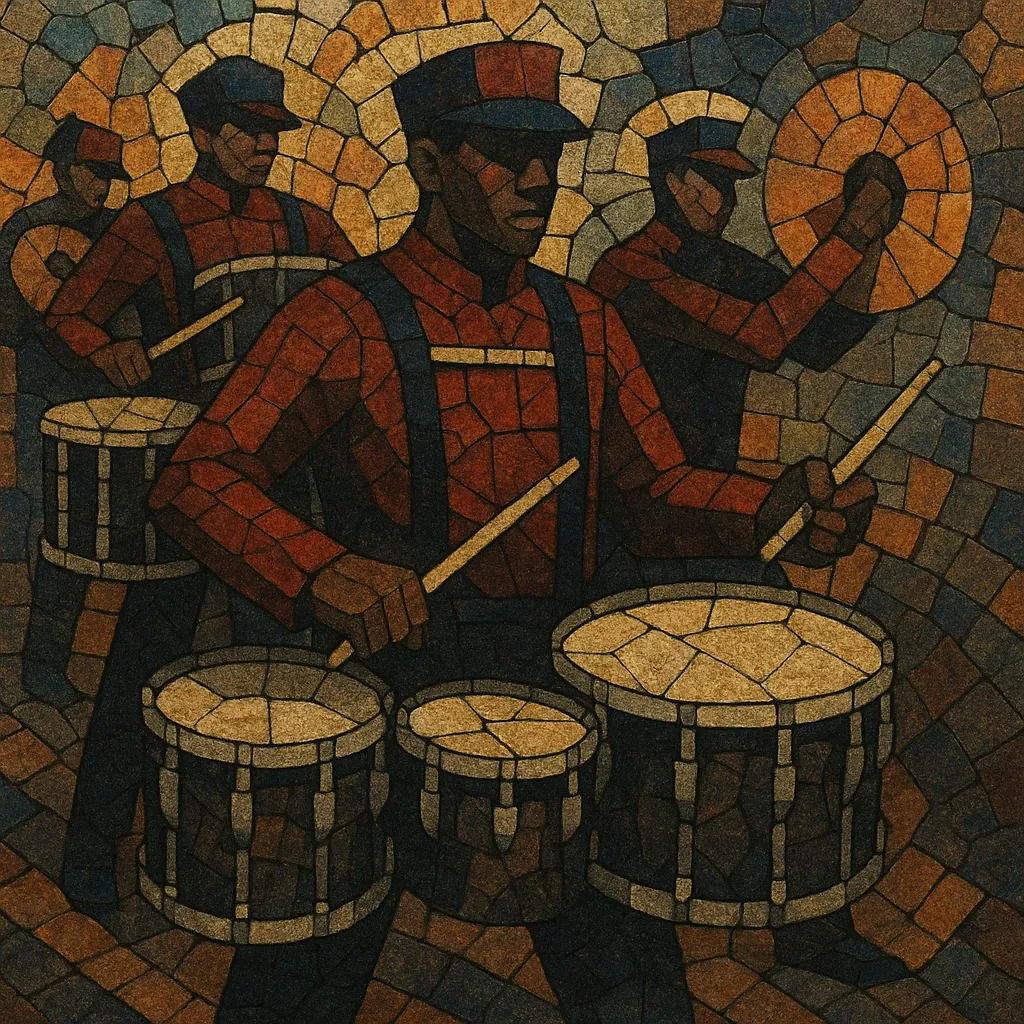Drumline refers to the marching percussion section of a marching band or drum corps, typically consisting of snare drums, multi-tenor drums (quads/quints), multiple tuned bass drums, and crash cymbals. Its core sound is built on rudimental snare vocabulary, split bass lines that interlock across a bass drum “line,” melodic and voice-led tenor writing, and visual cymbal choreography.
Two major aesthetics shape the style. The drum corps (DCI) tradition emphasizes extreme clarity, technical rudiment density, complex meters, and orchestral integration with the full ensemble. Historically Black Colleges and Universities (HBCUs) emphasize groove-forward cadences, call-and-response with the band and crowd, showmanship, and street-parade energy—often absorbing hip-hop, funk, and second-line feels.
Whether on a football field, in parades, or on indoor floors, drumline music balances precision (“clean” unison timing) with impact (dynamics, stick tricks, visuals), producing a uniquely athletic and theatrical percussion art.
Drumline practice grows out of 19th‑century military field drumming and fife-and-drum traditions, where snare and bass signaled maneuvers and kept marching pace. Scottish and Irish pipe band practices further contributed precision rudiments, sticking systems, and parade presentation.
As American public schools and universities built marching bands for parades and football halftime shows, dedicated percussion ranks coalesced. The early 20th century standardized the core instruments (snare, bass, cymbals), while rudimental snare literature provided a shared technical language.
Modern drum corps (and later Drum Corps International, founded 1972) transformed drumlines into high-velocity, highly trained ensembles. Composers and caption heads pushed hybrid rudiments, split bass voicings, and tenor “melodic” lines. Precision timing, readability of stickings, and field drill coordination became defining features.
HBCU bands established a show-style drumline noted for groove cadences, crowd interplay, and visual flair. This aesthetic, embedded in Black marching culture, influenced halftime entertainment nationwide. The 2002 film “Drumline” and subsequent touring productions popularized the style globally.
Winter Guard International (WGI) indoor percussion fostered theatrical staging, amplified electronics, and concert-style sound design alongside battery lines. Today’s drumlines synthesize corps-level technique with groove-informed writing, blending classical rudiments, hip-hop backbeats, and visual choreography across field and floor.


